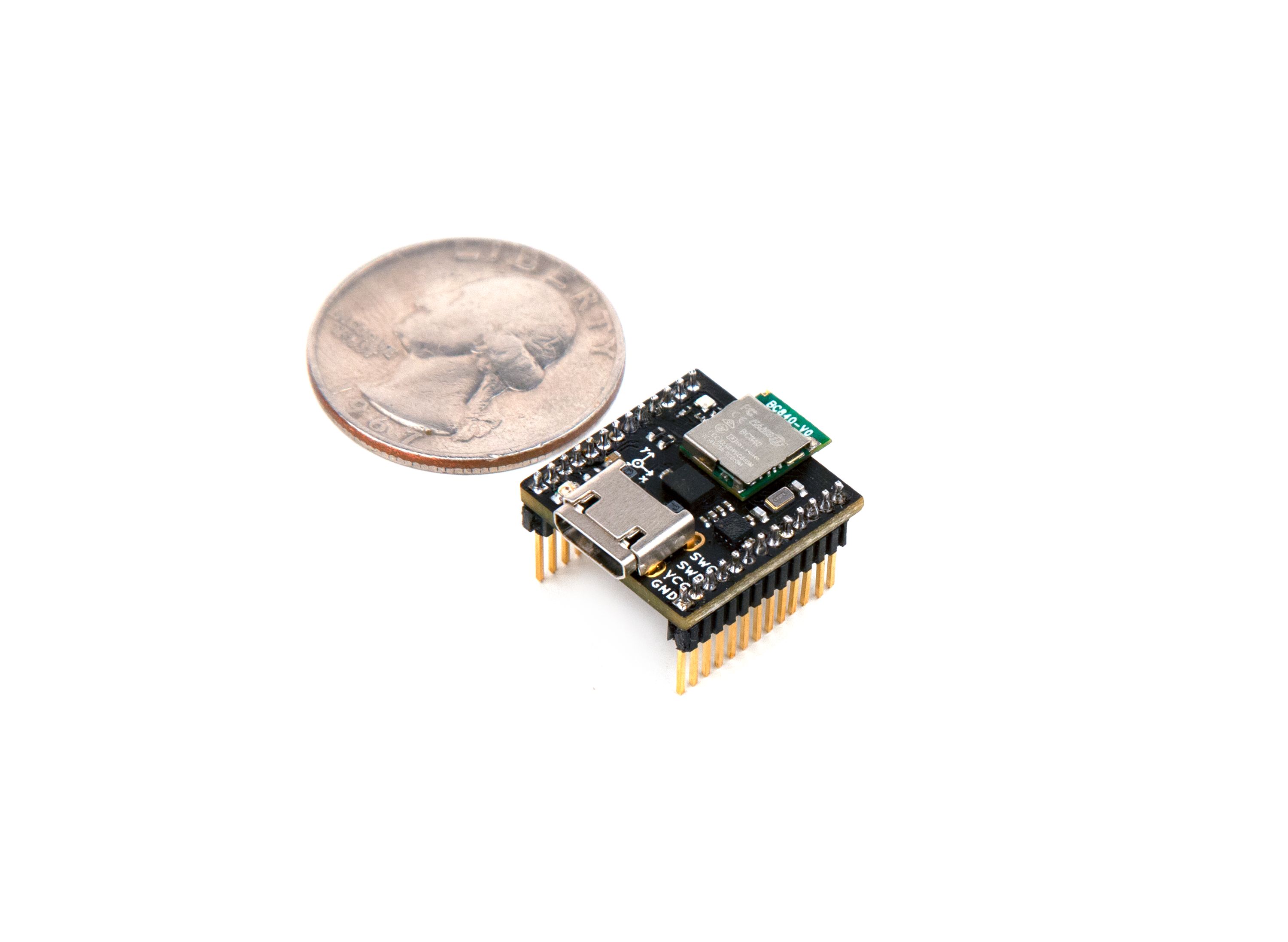Protobuf (short for protocol buffers) is a structured data serialization method developed by Google. This extensible format, which is both language- and platform-neutral, is used extensively within Google’s infrastructure, where it is considered the "lingua franca" for data.
Protobuf is gaining momentum among developers and is being used more widely within open source software projects.
Bluetera II is one of the first open source platforms to have adopted Protobuf as a medium for seamless information exchange between hardware and software.
The Problem With BLE-Based Applications
In many Bluetooth Low-Energy (BLE) applications, adding new functionality means either:
- Adding new BLE Characteristics, or
- Changing a proprietary binary structure using some service along the lines of UART-over-BLE.
Based on our experience, both options face significant limitations.
Adding BLE Characteristics is usually a cumbersome, error-prone procedure, whereas binary structures are unreadable and hard to maintain. Furthermore, both methods often require changes to the entire SDK (firmware, mobile software, cloud infrastructure, etc.), which breaks backward-compatibility and complicates future development.
Protobuf to the Rescue!
Bluetera uses Protobuf to streamline messages between the BLE module and the BLE SDK. This has some nice benefits:
- Language-neutrality - You simply define the schema file. Protobuf scripts then auto-generate boilerplate code for your language of choice.
- Platform-neutrality - No more messing about with little/big/medium endianness, no more worrying about how to serialize and deserialize a 'double' properly, etc. The framework takes care of all that.
- Compatibility - All changes are backward- and forward-compatible. You can add new fields without changing anything in legacy code.
- Self-delimiting - You no longer have to worry about delimiting consecutive messages (or even knowing the length of the structure). The serialization layer takes care of that.
- Efficient - While not a binary format, Protobuf goes to great length to encode data efficiently.
Protobuf "Hello World" - Control Bluetera II’s LEDs
This simple example presents a Desktop WPF application to turn Bluetera’s LEDs on and off. Notice how simple it is to add the new messages. There is very little boilerplate, and most of the code is pure business logic.
The stages are:
- Add a new LED-command to the schema file
- Add a button and a handler to the PC application to send the new command
- Add a handler to Bluetera's firmware to actually do the LED on/off work
You can find the sources for this example in the led-demo branch of our GitHub repository. To build and run this example, you will need to Download and install Protobuf.
Step 1 - Modify bluetera_messages.proto
Clone the Bluetera firmware repository
Locate
bluetera_messages.protoand add the following messages:
// define a new LED command
message LedCommand {
uint32 ledId = 1;
bool isOn = 2;
}
// update UplinkMessage to include the new command
message UplinkMessage
{
oneof payload {
ImuCommand imu = 1;
EchoPayload echo = 17;
LedCommand led = 18;
}
}
Step 2 - Add a Button to the PC Application
Clone the Bluetera Windows repository
Copy the
bluetera_messages.protofile to theprotobuffolder and generate the C# classes by runningsource/gen-messages.bat. This will generate all necessary boilerplate code (such as theLedCommandclass).Add a ‘ToggleLed’ button to
MainWindow.xamlAdd the following code to
MainWindow.xaml.cs
private async void ToggleLedButton_Click(object sender, RoutedEventArgs e)
{
// toggle LED state
isLedOn = !isLedOn;
// create the Uplink message
UplinkMessage msg = new UplinkMessage()
{
Led = new LedCommand()
{
LedId = 1, // 1 - red, 2 - green, 3- blue
IsOn = isLedOn
}
};
// send message
await _bluetera.SendMessage(msg);
}
Step 3 - Add the Firmware Handler
Generate the boilerplate C code by running
application/messages/gen-messages.bat. This will create the
necessary types to handle the new message
(BLUETERA_UPLINK_MESSAGE_LED_TAG,bluetera_led_command_t, etc.)Modify
bluetera_uplink_message_handler()inmain.cto handle the
new command:
...
switch(msg->which_payload)
{
case BLUETERA_UPLINK_MESSAGE_LED_TAG:
{
const bluetera_led_command_t* cmd = (const bluetera_led_command_t*)&msg->payload.led;
nrfx_gpiote_pin_t led_pin;
switch(cmd->ledId)
{
case 1:
led_pin = LED_RED_PIN;
err = BLTR_SUCCESS;
break;
case 2:
led_pin = LED_GREEN_PIN;
err = BLTR_SUCCESS;
break;
case 3:
led_pin = LED_BLUE_PIN;
err = BLTR_SUCCESS;
break;
}
if(err == BLTR_SUCCESS)
{
if(cmd->isOn)
nrfx_gpiote_out_clear(led_pin);
else
nrfx_gpiote_out_set(led_pin);
}
}
break;
...
}
- Build and update your Bluetera II!
Summary
Protobuf is Google’s way of streamlining data serialization. Most current applications of the framework are software-specific. Bluetera II is one of the first platforms to adopt this powerful technology as a way of handling interactions between hardware and software.
We hope the LED example above illustrates how Bluetera’s usage of Protobuf can help you:
- Save a great deal of time,
- Simplify your code,
- Lower the barrier to changes and enhancements, and
- Streamline development in a way that was not previously possible.
Meanwhile, please send us your questions, feedback, and suggestions!

